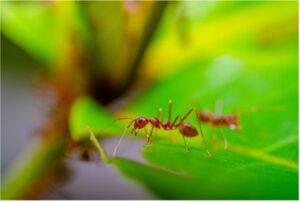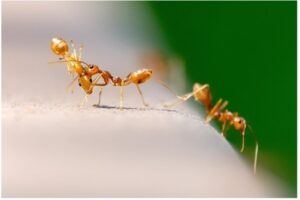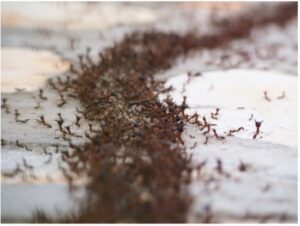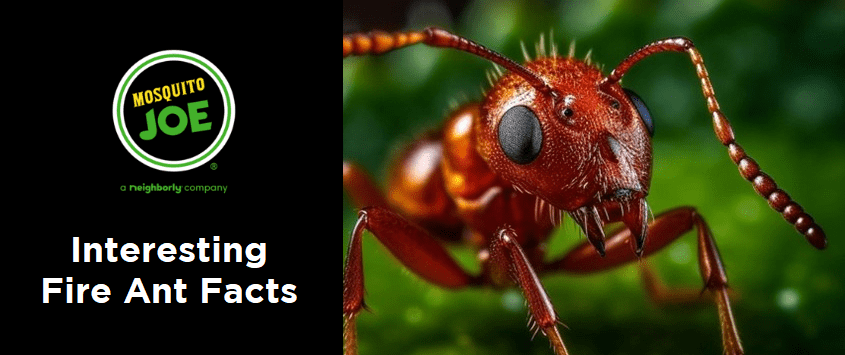Interesting Fire Ant Facts
We often get calls from folks who have recently moved to our area from out of state and have had their first encounter with fire ants. To put it mildly, they are horrified that such an insect exists and can’t understand why the rest of us are so seemingly so casual about them. We agree, fire ants are not to be trifled with and are pretty nasty. But Fire ants are also amazing creatures, so we thought we would share some interesting facts about them that you may not know.
Fire ants first came to the US in about 1918, arriving at the port in Mobile, Alabama. They arrived in soil used as ballast for the cargo ships. It took until the 1950’s for them to reach Texas and, since that time, they have spread all over the Southeast. The northern migration of fire ants is limited by cold winter temperatures that freeze the soil deeply enough to not allow the colonies to overwinter.
Fire ants spread by swarming: Unmated, winged reproductive male and female ants exit the mound in mass, fly into the air and mate while airborne. The newly mated fire ant queens fall back to the ground within a few miles of the mound from which they emerged. They shed their wings, eat them, and then attempt to start a new colony.


For every large mound in a lawn there are usually many younger colonies that are still too small to produce visible mounds. Small colonies develop into large colonies especially quickly if there are no bigger colonies nearby to compete with them. Once a young fire ant colony is well established and has a few thousand workers, it can quickly develop into a mature colony containing tens of thousands of ants. The mound is just like the tip of an iceberg and represents just a hint of what is going on under the soil.
Fire ant queens live a long time – as long as 7 years. They can lay up to 1,600 eggs per day. This translates to over 4 million eggs in her lifetime! The queen will never leave the nest once she develops into a breeding queen.


Adult fire ants are incapable of swallowing solid food and have to carry it back to the mound. Solid food is fed to the larger larvae, which chew and digest it, then regurgitate it in liquid form. This liquid food is then passed from the larvae back to the workers and shared with all ants in the colony. The queen will wait 48 hours before she eats the food, and if her workers die after ingesting it, she will not eat, thereby ensuring that the colony will not be lost.


Fire ant colonies can survive flooded conditions by “rafting,” and will establish a new mound wherever they happen to make landfall. This rafting is an amazing technique and it’s well worth a quick watch of this video from Nat Geo WILD to see it in action.
During times of flooding, it’s essential to keep an eye out for these rafts and stay well out of their way. When forced to relocate, worker fire ants will use their bodies to build a bridge across narrow expanses of water to allow safe transportation of their brood.
Fire ants have only one known predator; the Phorid Fly. The female phorid fly will seek out fire ants and lay her eggs in the ant’s thorax. When the egg moves into their larvae stage, they will push onto the ant’s head and kill it.
As with all insects, effective pest control requires a good understanding of the insect in question. While many homeowners utilize a poison they water in, to try and control and kill fire ants in their yard, Mosquito Joe prefers to use a bait that allows us to kill the queens. Our bait has a 72-hour delay which means we are able to circumvent the queen’s 48 hour wait time to feed, thereby killing the colony completely. Give us a call at 281-815-0228. to find out more!



